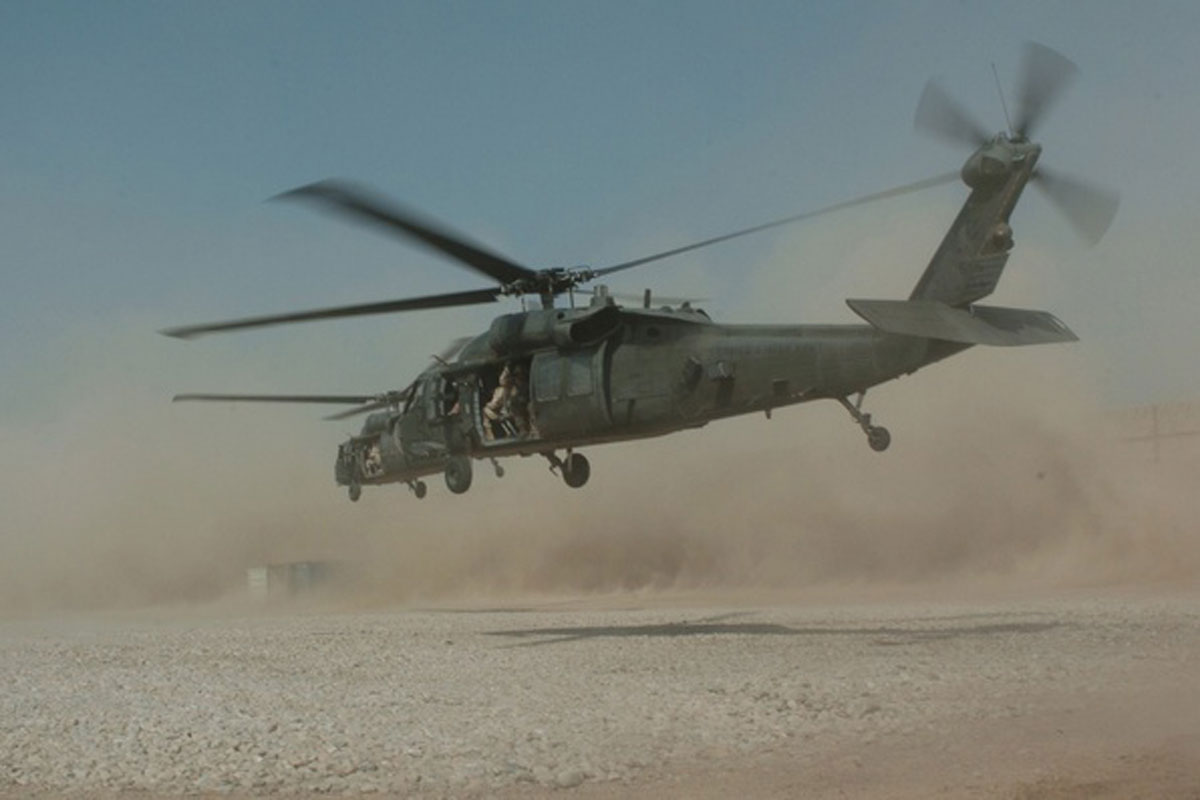Security First: Essential Action In UH 60 Helicopter Maintenance
Security First: Essential Action In UH 60 Helicopter Maintenance
Blog Article
Comprehending the Mechanics and Design Behind Uh 60 Helicopters
The UH-60 helicopter, typically understood as the Black Hawk, stands as a peak of modern-day rotorcraft innovation, personifying a mix of robust engineering and intricate auto mechanics. From its inception to its present iterations, the advancement of this airplane showcases a fusion of development and functionality. As we peel back the layers of the UH-60's layout, a globe of complex systems and precise engineering comes to light. Comprehending the mechanics and design behind this versatile airplane reveals a world where accuracy meets power, and where each component plays a crucial duty in achieving trip.
Background of UH-60 Helicopters
The background of UH-60 helicopters traces back to the late 1970s when the United States Military looked for a advanced and versatile energy helicopter to replace its aging fleet. In response to this demand, the Sikorsky Airplane Firm created the UH-60 Black Hawk helicopter. Presented in 1979, the UH-60 quickly ended up being a staple in military procedures due to its impressive capabilities.
The UH-60 was made to succeed in a range of missions, consisting of army transportation, clinical discharge, electronic warfare, and special procedures. Its capacity to adapt to various duties made it a beneficial possession to the united state Army and various other military forces around the world
Over the years, the UH-60 platform has gone through a number of upgrades and variations to boost its efficiency and equal progressing goal demands. These helicopters have actually seen extensive service in disputes such as the Gulf Battle, Afghanistan, and Iraq, showcasing their integrity and versatility in varied functional environments. The UH-60's rich history is a testament to its long-lasting legacy as a top utility helicopter.

Engine and Power Equipments
Using cutting-edge propulsion innovation, UH-60 helicopters are furnished with advanced engine and power systems to ensure ideal performance and reliability in a variety of operational circumstances. The UH-60, commonly understood as the Black Hawk, is powered by 2 General Electric T700-GE-701D engines, each with the ability of providing up to 1,940 shaft horsepower. These turboshaft engines give the necessary drive for the helicopter to accomplish its missions properly, including army transport, clinical discharge, and battle assistance.

Blades System and The Rules Of Aerodynamics
Exactly how do the rotor system and the rules of aerodynamics of UH-60 helicopters add to their operational performance and trip capacities? The rotor system of the UH-60 helicopter plays an important role in giving lift and propulsion.
The rules of aerodynamics additionally play a crucial function in the efficiency of UH-60 helicopters. The streamlined fuselage and blades blade design minimize drag, allowing the helicopter to accomplish greater speeds and far better gas performance. The wind resistant design of the UH-60 likewise adds to its capability to operate in diverse environmental problems, consisting of high altitudes and hot temperatures.
Avionics and Trip Control Solution

In its complex coordination with the blades system and the rules of aerodynamics of UH-60 helicopters, the avionics and flight control systems develop a critical network news of technologies forming the airplane's functional capabilities. In the UH-60, these systems consist of electronic display screens, interaction radios, General practitioner navigating, weather radar, and auto-pilot systems.
The flight control systems of the UH-60 are in charge of translating the pilot's inputs into the proper changes to the blades system, making certain stable flight and ability to move. These systems consist of hydraulic actuators, servos, and computers that interact to regulate the tail and main blades, in addition to various other flight control surfaces. By precisely taking care of the helicopter's flight dynamics, these systems enable pilots to do a large array of missions, from transportation and search-and-rescue to deal with operations, with accuracy and confidence.
Duty and Applications in Air Travel
Avionics systems in UH-60 helicopters encompass a range of electronic systems that aid in navigation, communication, monitoring, and controlling numerous airplane features. These systems consist of electronic displays, autopilot systems, communication radios, GPS navigating tools, and weather condition radar. Additionally, these systems include safety and security functions such as autopilot settings, surface understanding warning systems, and stability enhancement systems to enhance the overall security and functional abilities of the UH-60 helicopters in various missions, consisting of army transportation, medical discharge, search and rescue, and airborne firefighting.
Final Thought
Finally, the UH-60 helicopter is a flexible aircraft with an abundant history and advanced design. Its engine and power systems, blades system, aerodynamics, avionics, and flight control systems all interact to make it a dependable and effective maker. The UH-60's function and applications in aeronautics are large, ranging from military procedures to look and save missions. Its proceeded advancement and use show its value in the field of aviation (uh image source 60).
In its complex control with the rotor system and aerodynamics of UH-60 helicopters, the avionics and flight control systems develop a vital network of modern technologies forming the airplane's operational abilities.The trip control systems of the UH-60 are responsible for translating the pilot's inputs right into the appropriate adjustments to the blades system, making sure steady trip and ability to move. Avionics systems in UH-60 helicopters incorporate an array of electronic systems that aid in navigating, communication, tracking, and managing different aircraft features. Additionally, these systems integrate safety features such as autopilot modes, terrain awareness alerting systems, and stability enhancement systems to enhance the overall security and functional capabilities of the UH-60 helicopters in different goals, consisting of troop about his transportation, clinical discharge, search and rescue, and aerial firefighting.
Its engine and power systems, rotor system, the rules of aerodynamics, avionics, and flight control systems all work together to make it a reliable and efficient equipment.
Report this page